-
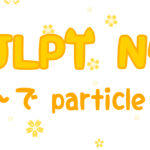
-
Japanese grammar で(de) particle【JLPT5】
2021/11/17
Particles like で, に, を, は are some of the most difficult grammar points for Japanese learners. Many Japanese learners in upper levels still get confused about how to use particles correctly. But you don't have to be too worried. The key to understand particles is to grasp the concept of each particle. Let’s understand the basic concept of で (de) and use it like a native Japanese. で (de) particle で (de) is one of the basic Japanese particles and is mainly used for four types of expressions. The basic concept of the で (de) particle is “a boundary.” ...
-

-
Japanese Culture Japanese Food Japanese Life
Dagashi – All about Japanese penny candies
2021/8/9 Japanese culture, Japanese snack, 日本文化, 駄菓子
You might have had sweet memories in your childhood when you got penny candies from the pocket money that your parents gave you. That excitement when you go home with the candies you got would be unforgettable. Penny candy is called “dagashi (駄菓子(だがし))” in Japanese. Dagashi has a huge variety of types and has a long history. We will introduce Japanese penny candies in this article. Let’s take a look at sweet Japanese memories! What is dagashi 駄菓子(だがし)? Dagashi (駄菓子(だがし)) are cheap candies and snacks for children. They have many varieties and each one is packaged in a colorful wrapping ...
-
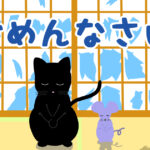
-
How to say sorry in Japanese. Casual and formal ways.
2021/8/8
Some people say that Japanese people apologize more than people in other countries. You probably have heard your Japanese friends say sorry a lot. This is because the Japanese respect good manners and value courtesy in their culture. Since Japanese people have solidified good manners in their culture from long ago, there are many expressions that mean “I’m sorry” in Japanese now. It’s going to be so much help for your good communication with Japanese people to learn some expressions of apologizing. We’ll share various phrases on how to apologize in this article, and we hope it will help you ...
-

-
How to say "you’re welcome" in Japanese.
When someone says "thanks" to you, you say “you’re welcome” or “no problem” in English. When you want to say “You’re welcome,” in Japanese, you say “どういたしまして (douitashimashite).” This is a basic word to reply to a thank you, but you rarely hear this word in a real conversation. Contrary to popular belief, Japanese people don’t say douitashimashite very often. So, is it not good to say どういたしまして (douitashimashite) when you reply to a thank you? The answer is “yes, it's fine." But there is a rule of using どういたしまして(douitashimasite). We will share about the natural way to say どういたしまして ...
-
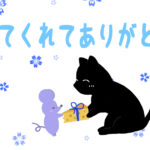
-
How to say thank you for ... in Japanese.
Thank you is "Arigatou (ありがとう)" in Japanese. Many people know "Arigatou (ありがとう)" but maybe there are few people who can say "thank you for (something)" Just saying "arigatou" is totally fine, but you can express your thanks more to someone if you can say what you're thankful for in Japanese. For Japanese beginners, saying your thanks specifically is the next level! We will share how to say "thank you for ..." in Japanese in this article. You'll learn the correct expressions for each situation. If you haven't read our previous post, check out Seven phrase to say thank you in ...
-
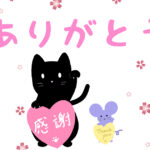
-
Seven phrases to say thank you in Japanese.
Saying "thank you" is fundamental when learning Japanese. Many learners may already know "arigatou" or "arigatou gozaimasu" but there are some other ways to say "thank you." We will share seven basic ways to say thank you, including "arigatou," as well as explanations about when to use them. It'll be easy to understand even for non-Japanese leaners! You will be able to say a "thank you" that is suitable for every situation and for every person. Seven phrases to say "thank you" in Japanese Arigatou gozaimasu / Thank you The most common way to say thank you in Japanese is ...
-

-
How to say boiled egg in Japanese.
2021/7/3 boiled egg, Japanese, Japanese food, onsen egg, ramen egg, ゆで卵, 日本語, 温泉卵
Boiled egg is called ゆで卵(たまご) (yudetamago) in Japanese. ゆでる(yuderu) is a verb meaning “to boil.” When you want to say boiled food in Japanese, the structure of phrase is same as English: boiled+food name, ゆで(adjective meaning boiled)+たまご(food name). Various ways to say boiled egg. Different people have different preferences for the hardness of their boiled eggs. Some people might like soft-boiled eggs, and other people like hard-boiled eggs. We will share about how to express the hardness of a boiled egg and various ways to say boiled egg! Soft-boiled egg/半熟(はんじゅく)ゆで卵(たまご) Boiled egg with a soft yolk is called 半熟(はんじゅく)ゆで卵(たまご) (hanjuku-yudetamago) ...
-

-
How to say fried egg in Japanese! Sunny side up, over easy and over hard.
In Japanese, fried egg is called 目玉(めだま)焼(や)き (medamayaki). 目玉(めだま) means “eyeball.” It’s called that because the yolk of the egg is round like an eye. Japanese people think of fried egg as breakfast or an easy lunch. 目玉焼き There are a lot of ways to fry an egg. In English, people have their eggs sunny side up, over-easy and over-hard. These words illustrate whether a person likes to have one side fried or both sides, or the yolk soft or hard. Today we’ll share how to say fried egg in various way! Different ways to say "fried egg." When you say ...
-
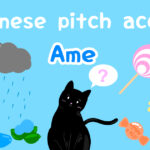
-
Watch out! 11 Japanese words that change meaning by pitch accent.
2021/7/21 Japanese, pitch accent, アクセント, イントネーション, 日本語
Japanese has what’s called a pitch accent. This is the intonation of Japanese language. If your goal is to sound like a native Japanese speaker, it’s important to have a grasp of it, since incorrect pitch accent will make you sound foreign. Pitch accent also differentiates words! For the word はし(hashi), pitch accent can change it from a bridge to a pair of chopsticks, so be careful! Here are some words that sound the same, but with different pitch accents. 11 different examples of pitch accent あめ 雨(あめ) (rain) vs 飴(あめ)(candy) あめ has two meanings. One is rain and another is ...
-

-
How to count time in Japanese. Hours, minutes and seconds.
2021/6/6 Japanese, Japanese words, time
People say that time is just an illusion, but you do use it in daily life! Time is one of the fundamental measurements of our daily lives. It’s also the foundation for language learning because you’ll need to express time when talking about things such as meeting places, getting on the train, or your daily life habits. The Japanese units of time are 時(じ) (ji)-hour, 分(ふん) (fun) -minute and 秒(びょう) (byou)-second. 時(じ) (ji) and 秒(びょう) (byou) are simple, but 分(ふん) (fun) is little tricky because the pronunciation changes depending on the numbers. In this article we’ll learn how to count ...
